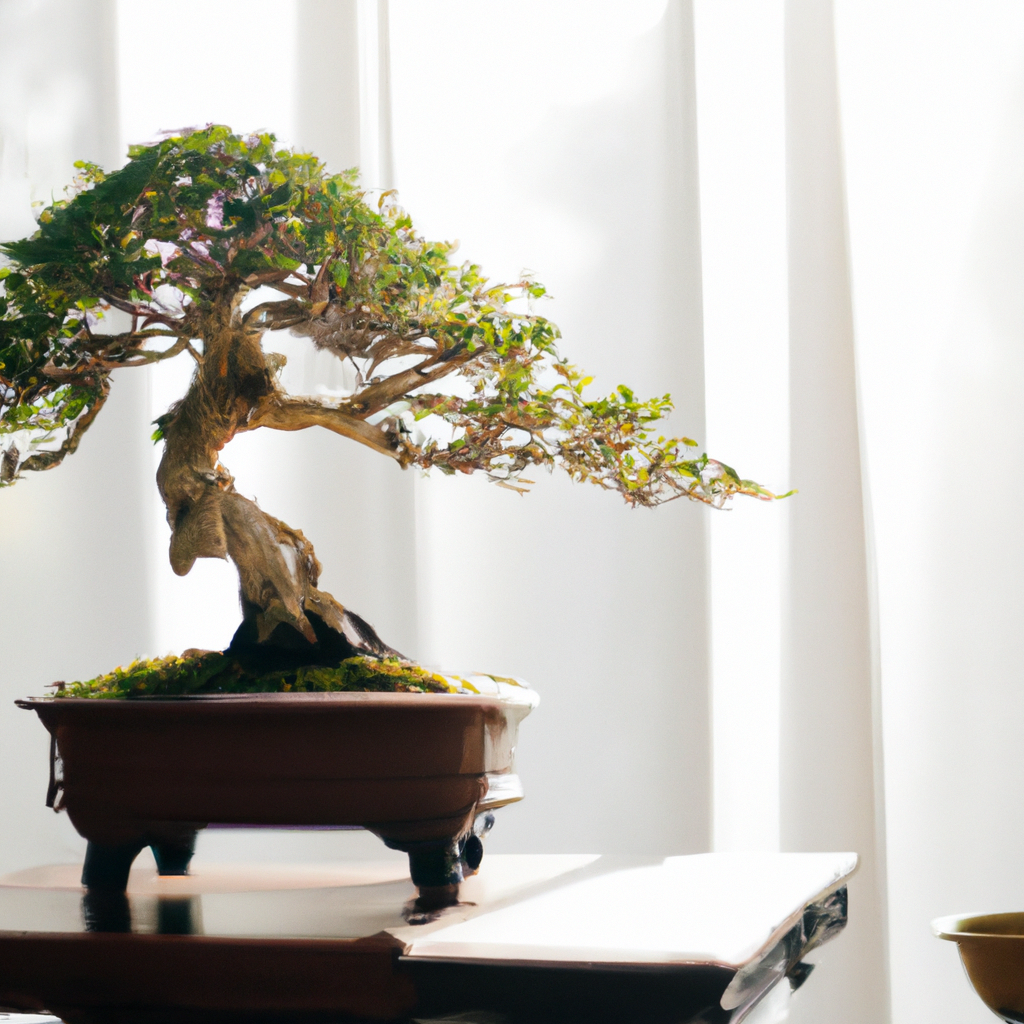Welcome to our comprehensive guide on the ancient Japanese art of bonsai. In this article, we will delve into the fascinating world of bonsai cultivation and provide you with all the knowledge and techniques needed to become a master bonsai artist. Whether you are a beginner or have some experience, this guide will help you unlock the secrets of creating and maintaining beautiful miniature trees.

What is Bonsai?
Bonsai, originating from Japan, is the art of growing and shaping miniature trees in containers. The word “bonsai” itself translates to “tray planting” in Japanese, reflecting the practice of carefully cultivating these tiny trees in shallow pots or trays. Bonsai trees are meticulously shaped and pruned to mimic the appearance of full-sized, mature trees, capturing their essence in a small-scale form.
A Brief History of Bonsai
The art of bonsai can be traced back thousands of years to ancient China, where it initially began as a practice of growing trees in pots for religious and spiritual purposes. It was later adopted by the Japanese, who refined and elevated it to an art form during the Heian period (794-1185). Bonsai became deeply rooted in Japanese culture, symbolizing harmony, balance, and a connection to nature.
Getting Started with Bonsai
Choosing the Right Tree
Selecting the right tree for bonsai is crucial to the success of your endeavor. Various species are suitable for bonsai, including junipers, maples, pines, and ficus trees. Each tree has unique characteristics and requirements, so it’s essential to research and choose a species that matches your environment and level of expertise. Consider factors such as sunlight, temperature, and humidity when making your decision.
Tools and Materials
To embark on your bonsai journey, you will need several essential tools and materials. These include bonsai shears, concave cutters, wire cutters, branch benders, bonsai wire, a root hook, and a bonsai pot. These tools will enable you to shape and style your bonsai effectively. It’s important to invest in high-quality tools for precise and delicate work.
Bonsai Techniques
There are various techniques used in bonsai cultivation to shape and maintain the trees’ miniature form. Some of the fundamental techniques include pruning, wiring, repotting, and defoliation. Pruning helps control the growth and shape of the tree, while wiring allows you to bend and position branches to achieve the desired aesthetic. Repotting is necessary to provide the tree with fresh soil and ensure proper root development, while defoliation can stimulate new growth and refine the tree’s appearance.
Nurturing Your Bonsai
Watering
Proper watering is crucial for the health and vitality of your bonsai tree. The frequency and amount of water needed depend on factors such as the tree species, pot size, and environmental conditions. It’s essential to maintain a balance, ensuring the soil is neither too dry nor waterlogged. Regularly check the moisture level of the soil and adjust your watering schedule accordingly.
Sunlight and Temperature
Most bonsai trees thrive in bright, indirect sunlight. However, the specific light requirements vary depending on the species. Research your tree’s light preferences and position it accordingly, ensuring it receives the appropriate amount of sunlight each day. Temperature also plays a vital role in bonsai care, as extreme temperatures can harm the tree. Protect your bonsai from frost and excessive heat, providing a suitable environment for its growth.
Fertilizing
Fertilizing your bonsai is essential to provide it with the nutrients necessary for healthy growth. There are various types of bonsai fertilizers available, including organic and inorganic options. Follow the manufacturer’s instructions for application rates and frequency, as over-fertilization can damage the tree. Regular fertilization will help promote vibrant foliage and strong root development.
Bonsai Styling and Aesthetics
Bonsai Styles
There are several traditional bonsai styles that you can explore to create unique and visually appealing compositions. These include formal upright, informal upright, slanting, cascade, semi-cascade, windswept, and literati styles. Each style has its distinct characteristics and principles, allowing you to express your creativity and personal taste.
Pot Selection
Choosing the right bonsai pot is crucial for enhancing the overall aesthetic of your miniature tree. The pot should complement and harmonize with the tree’s style, size, and color. Consider factors such as the pot’s shape, material, and glaze when making your selection. A well-chosen pot can elevate the visual impact of your bonsai and create a stunning display.
Conclusion
Congratulations! You have now embarked on a journey into the captivating world of bonsai. By following the techniques and principles laid out in this guide, you will develop the skills and knowledge needed to cultivate and nurture beautiful miniature trees. Remember, bonsai is not just an art form; it is a deeply meditative and rewarding practice that allows us to connect with nature on a profound level. So go ahead, embrace the art of bonsai, and create your own miniature masterpiece that will inspire and captivate for generations to come.
